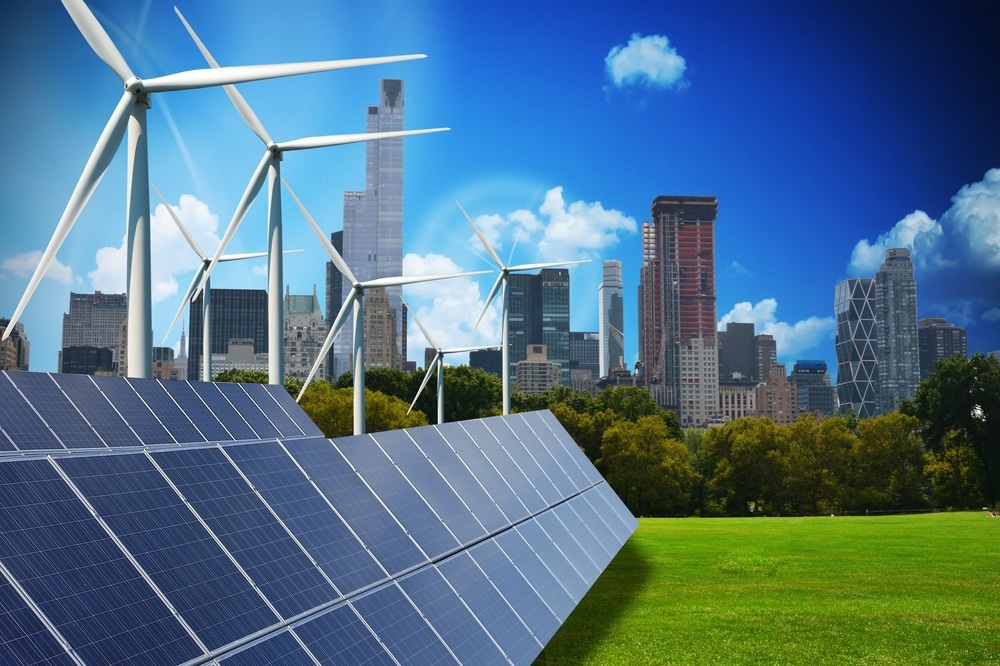The energy sector is in a state of transition as the world moves to lower carbon power generation. Embracing sustainable resources is key to achieving environmental goals, but due to their unpredictability, flexibility is key. Here, Karthik Velayutham, CTO of greentech innovator, Katrick Technologies, explains the role that plug-and-play power generation will have in the future energy landscape.

Image Credit: Katrick Technologies
The International Energy Agency (IEA) Net Zero by 2050 roadmap states that a rapid scale-up of renewable technology is needed to meet the world’s energy ambitions.
The roadmap estimates this could be achieved with an annual addition of 630 gigawatts (GW) of solar and 390GW of wind — but, these figures aren’t actually realistic. These levels are four times the record volume of wind and solar generation seen in 2020. In fact, the IEA estimates this level of solar alone would require constructing another of the world’s largest photovoltaic (PV) park every single day.
The IEA has noted that expanding the generation of existing renewable sites is needed, but we also need to see the creation of new technologies.
New Energy Technologies
This calls for a major acceleration of climate technology. In fact, the roadmap estimates that around half of the reductions in emissions in 2050 will come from technologies still at the prototype or demonstration stage.
These new technologies will address some of the key limitations that current renewable energy sources have, for example, flexibility. By nature, wind, solar and waves are all unpredictable, with only a certain degree of accuracy achievable in estimating kinetic energy potential. This means that the energy flow from a renewable source can be inconsistent and unstable and difficult to control.
Moreover, it should also be considered that not every solution is suitable for every location — landlocked areas will not benefit from tidal power and built-up areas present an obstacle for wind power.
Energy storage offers one solution to this challenge. While a variable supply can pose an issue in a typical grid configuration, implementing battery storage to store surplus energy can safeguard supply.
Plug-And-Play Generation
A growing area of green energy technology is plug-and-play systems. Plug-and-play technology is able to be used immediately once it is connected, with minimal installation required.
By their very nature, plug-and-play systems are more agile and flexible. They do not require complex infrastructure or large amounts of space. What’s more, as they can be installed individually and are easy to connect to the wider grid, the penetration level has the potential to be significant.
At present, the most common plug-and-play tech is solar. Around 1.2 million, or 4.1 per cent, of UK homes use the technology. However, when compared to solar power, wind is more efficient overall. A single turbine can produce electricity per kWh — equivalent to 48,704 solar panels — but options for wind power are currently limited due to their size.
In built up and urban areas, wind is a source relatively untapped power resource. Small turbines for individual use do exist, but to install a one large enough to power a house or business can be very costly and subject to complex planning regulations.
Exploiting low-level and ground winds will expand the generation capacity of renewables, and this is what Katrick Technologies has been focusing on.
Katrick Technologies’ low level wind panels are hexagonal units equipped with aerofoils that capture kinetic energy from wind at a far wider range of frequencies than turbines, including low level and ground winds. The modular configuration of the panels makes them incredibly flexible — they can easily be fitted to buildings in urban and built-up areas.
A 10-panel 10 kW rated array can potentially generate up to 22,000 kilowatt hours (kWh) of electricity and save up to 4,664 kg of CO2 from being emitted each year. Like many green energy technologies that will make an impact in future, the wind panels are currently in development. Katrick Technologies has partnered with the Manufacturing Technology Centre (MTC) to develop a prototype of the panels which will then be showcased to original equipment manufacturers (OEMs) and energy investors.
Renewable energy is essential in reaching net zero targets, but for this to happen, plug-and-play technologies will play a vital role. Boosting flexibility and stability by improving the diversity of energy generation can help to balance energy supply with demand for clean, consistent power.